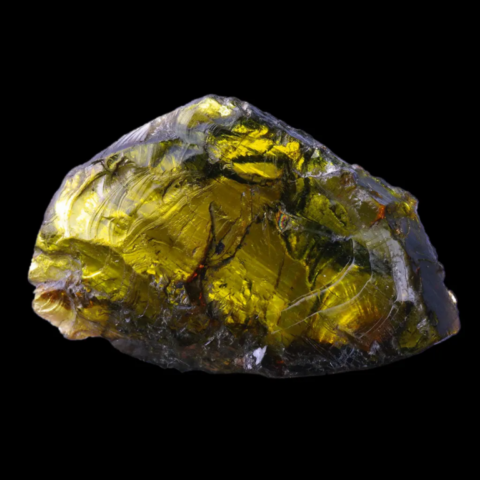ENSTATITE
Class : Silicates
Subclass : Inosilicates
Crystal system : Orthorhombic
Chemistry : MgSiO3
Rarity : Common
Enstatite belongs to the group of orthorhombic pyroxenes (or orthopyroxenes). It is a constituent of basic and ultrabasic rocks (pyroxenites, peridotites and more rarely gabbros and norites), also present but rarer in high degree metamorphic rocks ( granulites and charnockites), contact deposit ( hornfel), or volcanic rocks. Enstatite (magnesian) forms a continuous series with ferrosilite (iron), bronzite being a variety of enstatite of intermediate composition. Magnesian orthopyroxenes deteriorate into talc or serpentine, iron-bearing orthopyroxenes rather into amphibole ("uralitization"). It is a mineral that takes its name from the Greek enstatês (antagonist), alluding to its heat refractory character. Net crystals are rare and only known in gabbroic pegmatites : they are then flattened prisms. Enstatite usually occurs in fibrous, lamellar, grainy or compact masses, white, grayish to yellowish, greenish to light brown, sometimes dark green. It is exceptionally used as a gemstone when it occurs as bright green, colorless, pink or brown crystals, sometimes with a clear asterism ; specimens with strong chatoyancy are exploited for ornamental purposes in Canada, India and Brazil (bronzite).
Photo : Gemmy dichroic enstatite crystal from Kilosa District, Morogoro Region, Tanzania © Rémi Bornet
Enstatite in the World
Twinning
No twin known for this mineral species. On the other hand, orthopyroxenes such as enstatite may exhibit exsolutions of clinopyroxene (augite) just as augite may exhibit exsolutions of orthopyroxene. These oriented exsolutions are often confused with twinning.
On the left, a photo of an orthopyroxene exsolution in augite (yellow bands) in analyzed-polarized light.
Fakes and scams
No fake recorded for this mineral species.
Hardness : 5 to 6
Density : 3.2 to 3.9
Fracture : Irregular
Trace : White to grey
TP : Translucent to transparent
IR : 1.650 to 1.679
Biréfringence : 0.009 to 0.011
Optical character : Biaxial +
Pleochroism : Visible
Fluorescence : None
Solubility : Hydrofluoric acid
Magnetism : Paramagnetic
Radioactivity : None








